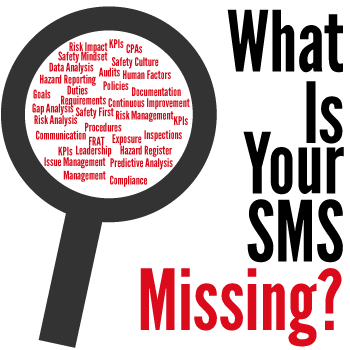Monitoring Safety Performance in Aviation SMS Manuals
Monitoring safety performance is a critical component of an aviation Safety Management System (SMS) manual, as outlined in TOC 4.1–4.3. It ensures that safety goals are met, risks are managed, and compliance is maintained with International Civil Aviation Organization (ICAO), Federal Aviation Administration (FAA), and European Union Aviation Safety Agency (EASA) standards.
Read More
Topics:
Aviation SMS Implementation,
3-Safety Assurance
Develop Safety Analysis Process for Aviation SMS Manual
A safety analysis process is a critical component of an aviation Safety Management System (SMS) manual, as outlined in TOC 5.1–5.5. It ensures systematic evaluation of safety data, including hazard reports and incident investigations, to support Management of Change (MOC) and maintain compliance with International Civil Aviation Organization (ICAO), Federal Aviation Administration (FAA), and European Union Aviation Safety Agency (EASA) standards.
Read More
Topics:
Aviation SMS Implementation,
3-Safety Assurance
For new aviation safety managers, preparing for Safety Management System (SMS) audits is a formidable challenge, especially when it involves coaching accountable executives and training staff on SMS concepts.
With limited experience, knowing where to start can feel overwhelming. At the heart of effective SMS implementation lies a clear understanding of ICAO Annex 19, the International Civil Aviation Organization’s cornerstone document for safety management. This global standard provides the framework for SMS, guiding organizations worldwide to enhance safety and meet regulatory expectations.
Read More
Topics:
Aviation SMS Implementation,
4-Safety Promotion,
3-Safety Assurance,
1-Safety Policy,
2-Safety Risk Management,
Risk Management Training
For new aviation safety managers, preparing for a Safety Management System (SMS) audit can feel like navigating uncharted skies. A critical challenge is ensuring that accountable executives—senior leaders like CEOs, directors, or operations managers—understand and fulfill their SMS responsibilities.
These executives are pivotal in demonstrating compliance to regulators like the FAA, EASA, or ICAO, yet many lack the time or technical background to dive into the aviation SMS details.
Read More
Topics:
Aviation SMS Implementation,
4-Safety Promotion,
3-Safety Assurance,
1-Safety Policy,
2-Safety Risk Management,
FAA Compliance,
Safety Culture
Building Safety Assurance in Aviation SMS Manuals
Safety Assurance (SA) is a critical pillar of an aviation Safety Management System (SMS) manual, as outlined in TOC 2.1.4 and 7.1–7.5. It ensures that safety processes function effectively through audits, performance monitoring, and corrective actions, aligning with International Civil Aviation Organization (ICAO), Federal Aviation Administration (FAA), and European Union Aviation Safety Agency (EASA) standards.
Read More
Topics:
Aviation SMS Implementation,
3-Safety Assurance,
Risk Management Training
Implementing SRM in Aviation SMS Manuals
Safety Risk Management (SRM) is a core component of an aviation Safety Management System (SMS) manual, as outlined in TOC 3.1–3.7. It provides a structured process to identify, assess, and mitigate risks, ensuring compliance with International Civil Aviation Organization (ICAO), Federal Aviation Administration (FAA), and European Union Aviation Safety Agency (EASA) standards.
For safety managers, consultants, and accountable executives, implementing SRM effectively reduces operational risks by up to 30%, as achieved by a utility client.
Read More
Topics:
Aviation SMS Implementation,
2-Safety Risk Management
Setting Aviation Safety Goals for Compliance
Setting safety goals and objectives in an aviation Safety Management System (SMS) manual, as outlined in TOC 1.6, is essential for driving continuous improvement and ensuring compliance with International Civil Aviation Organization (ICAO), Federal Aviation Administration (FAA), and European Union Aviation Safety Agency (EASA) standards.
These goals guide organizations in measuring safety performance, reducing risks, and fostering a proactive safety culture.
Read More
Topics:
Aviation SMS Implementation,
4-Safety Promotion,
1-Safety Policy,
Risk Management Training
Managing FAA, ICAO & EASA Requirements
Aviation Safety Management Systems (SMS) must align with the core frameworks of the FAA (14 CFR Part 5), ICAO (Annex 19), and EASA (integrated into domain-specific regulations like Part-OPS, Part-145, and Part-21). These bodies emphasize the four pillars of SMS:
- Safety Policy,
- Safety Risk Management,
- Safety Assurance, and
- Safety Promotion
Read More
Topics:
Aviation SMS Implementation,
Aviation SMS Database,
Risk Management Software,
Safety Culture
Creating Aviation SMS Communication Plans
An effective communication plan is a vital component of an aviation Safety Management System (SMS) manual, as outlined in TOC 1.5. It ensures that safety information, including hazard reports and safety policies,
Read More
Topics:
Aviation SMS Implementation,
4-Safety Promotion,
1-Safety Policy
For new aviation safety managers, preparing for a Safety Management System (SMS) audit is a daunting task. One of the most challenging aspects is coaching accountable executives—senior leaders like CEOs, directors, or operations managers—to play their part in demonstrating SMS compliance.
These executives often lack the time or technical expertise to fully grasp SMS concepts, yet regulators from the FAA, EASA, or ICAO expect them to articulate their role in overseeing safety.
Read More
Topics:
Aviation SMS Implementation,
3-Safety Assurance,
Risk Management Training,
FAA Compliance,
Safety Culture













